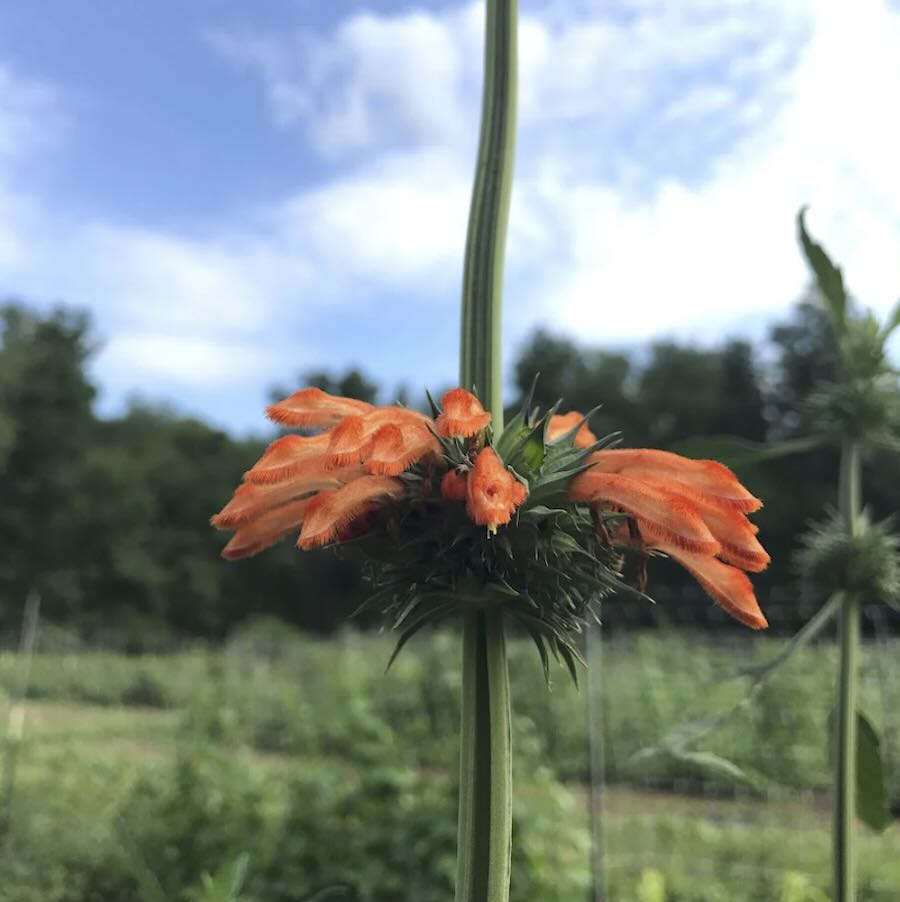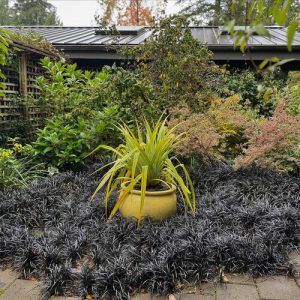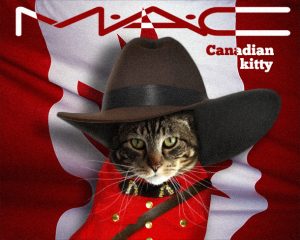
WHEN SHOPPING the seed catalogs, I realize I’m probably more likely to consider a tomato or pepper I haven’t grown before, or some unusual annual flower, than to try some new-to-me herb. But what a shame. I need to modify that behavior and spice things up a bit.
I need to move beyond what today’s guest, Hudson Valley Seed Company’s co-founder K Greene, calls “the must-have,” more standard types of herbs. And give some garden space to ones he labels the “try these, too” kinds.
K Greene is co-founder with Doug Muller of Hudson Valley Seed in Accord, New York. With their team on their certified organic farm there, they produce much of the seed they sell. Their catalog is a mix of vegetables, flowers, and herbs—our topic today. All of them open-pollinated, and include many heirlooms. (Above, Klip Dagga, a tropical mint relative from Africa and India.)
Plus: Enter to win a $25 gift card for Hudson Valley Seeds by commenting in the box near the bottom of the page.
Read along as you listen to the Feb. 26, 2024 edition of my public-radio show and podcast using the player below. You can subscribe to all future editions on Apple Podcasts (iTunes) or Spotify (and browse my archive of podcasts here).
 try some new herbs from seed, with k greene
try some new herbs from seed, with k greene
Margaret Roach: It’s good to talk to you again, K, and I don’t think we’ve talked about herbs specifically in all the years that we’ve known each other [laughter].
K Greene: I don’t think we have, but to be here to talk about something new.
Margaret: So you labeled them “the must-haves” and “try these, too.” What are a couple must-haves for you? I’ve got to have parsley, I know that.
K: Yeah, I think parsley is a must-have. And particularly the ‘Gigante d’Italia,’ the flat-leaf.
Margaret: Oh, me, too. That’s my parsley. Yeah, yeah.
K: That’s the one. And one thing about parsley that is a question we get sometimes: I don’t think folks realize that it takes longer for those seeds to germinate than other seeds. And so there can be a little bit of impatience [laughter] of, “My windowsill, what’s wrong with the seeds? Why isn’t this happening?” They take a little bit longer, but it’s totally worth the extra wait.
Margaret: Yeah, I usually start those closer to when I start my onions—not as early—than to when I start say, my peppers or tomatoes. Do you know what I mean? It’s in the middle there somewhere, longer than my quicker things. So yeah, I give them a couple of extra weeks. You have some interesting ones? You have one that I have never heard of. I don’t even know how you say it. ‘Menuette’ [below] or something?
K: ‘Menuette.’ Yeah. It’s somewhere between a green and an herb I would say. But you’ll see it mixed more in like a salad mix.

K: We try to add things that are both things that people are really looking for. But as I’ve learned more about herbs, because I’m not a culinary expert, that’s not my bent, but we hear from people who are cooks and they’re looking for more specific herbs than I would be familiar with.
And for me, actually, one of them—and maybe this is silly [laughter], but the difference between oregano and marjoram always eluded me. But people are very specific about it in terms of dishes and cooking.
And so a couple years ago we did one of our art packs for marjoram to really educate ourselves, but also hopefully share with people who were like me, who were like, “What’s the difference?” [laughter] to really start to understand that there’s a different flavor profile for each of those.
Margaret: Yes. Well, the ‘Menuette’ parsley, it looks a little shaggy almost. It actually looks like it would be easier to chop and like as you say sort of tear and throw into a salad. And you wouldn’t get all those kind of flat leaves that were just stuck to other things maybe.
K: And it’s like a mouth-feel thing. And with herbs, I think about all of the senses really, when I think about herbs: that they’re beautiful and ornamental. There’s the flavorful culinary quality. There’s a fragrant aromatic-ness to your garden when you’re growing herbs. And then for culinary folks, especially the fresh-eating herbs, there’s this mouth-feel that is so important. And when you’re putting together a salad mix, you want to have those different textures in there, as well as the colors and the shapes and the flavors. But the texture is important, too.
Margaret: Yeah. And some herbs out in the garden are pollinator magnets. A lot of them actually are in the mint family, and that’s always a popular family with insects, pollinators. And other ones, some of them are composites, daisy-shaped flowers like feverfew, I’m thinking of, for instance. And those are real magnets for insects as well. Some are medicinal, some are used for crafting—all kinds of different things.
K: Yeah. For pollinators, I love having both chives and garlic chives. They bloom at different times, they’re very different-looking blooms. The chives have that beautiful purple tuft to them. And then the garlic chives has that globe that has those beautiful five-pointed-star white flowers, and you always see pollinators around them, and they’re perennial.
So when I am thinking about designing an herb garden, I always start with, “Which are the perennial herbs?” Those are my anchor plants. And I know they’re going to spread and they’re going to come back. And then I think about where I’m going to put my annuals in between those anchoring perennials. And it’s almost like having a miniature cottage garden kind of feel where you have lower mounding and higher and spiky and things blooming at different times. It’s a great way to miniaturize garden design in a manageable way [laughter]. And also, then not worry so much about the deer as well, because the deer don’t like a lot of the herbs that we like.
Margaret: Yeah. No, I have an edge in one area, an edge of garlic chives and it’s just great. I don’t know if it’s high summer or a little later even, I’m not sure; I can’t quite picture at the moment what the timing is. But speaking of abuzz, it is just unbelievable the number of species of insects that are interested in those flowers.
So yeah, there’s lots of other… So we could talk again in any of those directions: perennial, annual, culinary, medicinal, whatever. You have a number of different perillas or shisos.
And that’s one that I always used to grow. I used to grow the purple one that I think they use it in vinegar, rice vinegar, to tint the sliced ginger in Japanese restaurants and so forth. It gives that pink tinge. But you have a couple of different ones; you have a green one also [‘Ao’ shiso, below].

Margaret: Yeah. And I see that you recommend in the catalog that it can be used—and you say this about a number of things, dill for instance—that it can be used as microgreens, that you can sow the seeds as microgreens. So do you guys do that? That’s interesting.
K: We do. We just added microgreen kits recently, and we’ve been creating larger pack sizes for microgreens because you do so much succession sowing with the microgreens. But for me, the microgreens really are about flavor. Sometimes I want something really spicy with the microgreens to put on top, but the herbs, they have their flavor at that microgreen stage. So you’re doing basil, like cinnamon basil or lemon basil or ‘Genovese’ basil; it’s going to have that cinnamon or lemon or ‘Genovese’ flavor to it, which is just so easy to add to a sandwich. Parsley actually is great, too, but again, you have to be a little patient. Chervil. Do you like chervil?
Margaret: Yeah. Mm-hmm.
K: Yeah. I love chervil. That’s another one that at a microgreen stage has this slight anise flavor. And then at its mature stage, has that same mouth feel like the parsley that we were talking about, like the crinkly texture to it.
Margaret: Well, so you mentioned basils and you’ve got plenty of basils, and that’s one place where we could… As gardeners, we may each do the ‘Genovese,’ the classic Italian basil. But there’s other directions to go. And some of them are used for different things. So do you have particular favorites or-
K: I love the cinnamon basil.
Margaret: Oh!

Margaret: Yeah, I think some people say holy basil, right?
K: Yeah. I sometimes grow it just for the aroma in the garden. It is so fragrant, you can smell it from 15 feet away as you walk through. So I really love that one.
A herb that is a flower that I grow that’s in the mint family called Klip Dagga is probably my best all-time favorite herb/flower of the year last year. And I am going to grow it forever and ever and ever [laughter]. I love it so much. And the hummingbirds love it. And it’s just spectacular.
Margaret: And that’s an oddball. So it’s a Leonotis technically. And there’s also a perennial Leonotis, Leonotis leonurus, but this is Leonotis nepetifolia. And again, is another thing that’s in the mint family, but it can get really tall. Each little flower on these crazy balls that are up the stem, every so often up the stem, it looks like something from outer space to me with these crazy flowers coming out of it. It can get taller than 6 feet, surely.
K: Oh, yeah. No, when I grow them, they’re around 10 feet.
Margaret: That’s crazy.
K: And they have those whorls, I don’t know how to say it.
Margaret: Whorls. Yeah.
K: Yeah. Don’t think you’re supposed to say the H, but I do, because I don’t want people to think that I’m whirling. The whorl grows all the way around the square stem, and then it looks like a lion’s mane around the stem from the orange flowers.
Margaret: And they’re like little tubular flowers, like something in the mint family. Again, it looks like outer space to me. It’s like these space stations going all the way up this giant, 10-foot pole [laughter].
K: I grow them right in front of our big picture window because the hummingbirds love them so much, and it’s a living hummingbird feeder. So the hummingbirds come up and they’re less than a foot away from our window, and they go in a circle right around the flower, around the whole stem, hovering like that, and I can just sit there and watch them up close. I love it.

K: Yeah. And a good companion for that. If you want to go really Seussian, is the Spilanthes.
Margaret: Oh.
K: So that’s low-growing, and it has those button type flowers. They almost look like the center of a Coreopsis or of an Echinacea without the petals. And they’re yellow, and it’s low-mounding, and it does have medicinal properties as well. It is grown as a medicinal herb, but just for me, the look of those two together just really tickles me.
Margaret: Is that the one we called toothache plant or something like that?
K: Yeah.

K: Yeah. Great.
Margaret: All right. Cool. You have another perennial that I’ve probably had for at least 25 years, if not longer—speaking of being a real perennial—is lovage. And you say in the catalog “this will be your new favorite herb.” And I can’t believe that it’s not in every garden, because-
K: Why isn’t it so popular?
Margaret: It’s unbelievable. To say this tastes like celery is not doing it full justice, but that’s the closest flavor I know that it tastes like.
K: It’s rich. It’s just so rich. And just a little bit of that in soup stock. It changes your whole soup, period. And it’s perennial and it’s so pretty. It’s an elegant, elegant plant to grow.
Margaret: And it looks a little bit like celery, not the stalks in the same way, not as thick or anything, but do you know what I mean? The leaves. Anyway, it’s lovely. It doesn’t ask anything of you. It comes up every year, but lovage—I just can’t imagine why people don’t want it. Even though it’s a perennial, it can be grown from seed. Yes?

Margaret: That’s right.
K: It behaves that way. But once you get it going, you’re going to have it forever. It’s going to spread…and talk about aromatic. And last year, anytime I needed a gift for anyone, I just went out and cut lavender, and made little bundles to dry. And it was just like a lovely way to celebrate the garden, and to share that with someone who maybe isn’t a gardener, but wants to have something from the garden in their life that they can enjoy.
Margaret: Sweet. A little tussie-mussie of dried lavender. That’s sweet. Yeah, that’s very sweet. I hadn’t thought about that.
Again, similar to the fact that you have that unusual parsley: In the cilantro world, you have… One of the things about cilantro for people who like it—and I know it’s a love-hate thing for a lot of people, ’cause it is an oddball taste—but one thing about it is even if you love it, it’s not going to last. You really need to almost sow it like every 10 days or two weeks, a small amount every 10 days or two weeks, so you keep having the leaves. Otherwise, it’s going to bolt. But you have a suggestion about that. Yes?
K: Yeah. Well, it’s an interesting one because sometimes we get used to the common name of something and it’s easy to be cilantro with cilantro, but there’s many varieties of cilantro, and the different varieties have different qualities. And so the ‘Caribe’ that we added to the catalog is more heat-tolerant. So instead of bolting so fast, which the common cilantro does, you’re going to are getting a longer period of time of harvesting it, so you don’t have to do as frequent sowing because you get a little bit more time.
It’s great to actually use both. So in the cool season, you can start with the common cilantro. When you’re starting to approach the warmer season switch to the ‘Caribe,’ and use that for the summer. And then you can switch back to the other cilantro. But the other thing that I love about cilantro and bolting is that when it goes to seed, it’s coriander.
Margaret: I know. And we forget that. We get frustrated because we went out to get some cilantro to chop over the burritos or whatever [laughter] and or put in the salsa and it wasn’t there. But we forget if we just left the plants, they would provide something new.
K: And you get to be a seed-saver. So letting it bolt and collecting the seeds means you have seeds for the next year, and you have spice for your spice drawer. The other thing I would just say is there is a real qualitative difference between “fresh” coriander seed and what you’re buying in the store, which is much older. Those have been around longer. You can just tell. It’s just like the way we think about tomatoes. There’s a big difference between the tomato on a shelf in the grocery store and the one that you went out back in your yard and picked. Even if it’s the same variety, there’s going to be a different flavor quality. So I think that’s true of the coriander as well.

K: Depends on who you talk to, Margaret.
Margaret: [Laughter.]
K: Some people would be really offended if you said it tastes like tarragon. I think it has qualities of tarragon. The reason I think some people lean into the tarragon nature of it is because you can’t start true tarragon from seed; you have to get the plants. And so this is something that you can sow, that you can grow and harvest that has some of the same culinary properties. So I’d be careful who you tell [laughter] that it tastes just like tarragon. Let’s say tarragon with a little bit of anise.
Margaret: Hints of tarragon and anise. How about that: Hints? [Laughter.]
K: Just to say, “Hey, it’s not the same thing, but you can pretend.”
Margaret: Yeah. And then was one that really surprised me, that’s a perennial actually. You have watercress, which is a nasturtium, a perennial species of nasturtium. And you even say that we can grow it in containers, which that just sounds like fabulous to me, to have some watercress that I could spice up a salad or whatever, if I have pots of it.
K: If you have running water somewhere, cold, cool, running water somewhere, you can establish it, and have it forever. But if you don’t, you can grow it in a container. You want to refresh the water periodically; it’s not like you’re just going to leave it sitting, especially when it gets hot. It doesn’t want to be that hot. So refreshing that with cool water is good.
But part of the reason that I wanted to add it is there’s research that shows that this is one of the oldest plant-human relationships. We can look thousands and thousands maybe 10,000 years back, in terms of the relationships that people have had with plants and how we are interdependent. We depend on each other. And so watercress is one of those really ancient relationships. And the artwork that we commissioned for it was all about telling that story of how long we have been in love with watercress as humans, and still today. And that’s one of the reasons I wanted to add it, plus the flavor.
Margaret: And you just said artwork, and one of the things that Hudson Valley Seed is known for is its art packs. You can buy some of the seeds in these beautiful packs with just pieces of artwork on them and just very, very special. And that’s just been a signature of the company since the start, I think. So we didn’t even get to calendulas. Oh, so many other things.
K: Calendula. Oh, man.
Margaret: I know. And we could make salve, but we’ve run out of time, of course.
K: I’m sorry. I can talk about plants forever with you.
Margaret: Yeah, well, it’s addictive. I know both of us. But I do appreciate you making the time. I hope I’ll talk to you again soon. In the meantime, I’m ordering some herbs, ASAP [laughter].
K: It was great to chat again.
enter to win a $25 seed gift card
I’LL BUY A $25 gift card to Hudson Valley Seed for one lucky reader. All you have to do to enter is answer this question in the comments box below:
What herb do you always grow, and is there one you are now tempted to try (maybe from this conversation or for some other reason)?
No answer, or feeling shy? Just say something like “count me in” and I will, but a reply is even better. I’ll pick a random winner after entries close at midnight Tuesday, March 5, 2024. Good luck to all.
prefer the podcast version of the show?

 try some new herbs from seed, with k greene
try some new herbs from seed, with k greene





